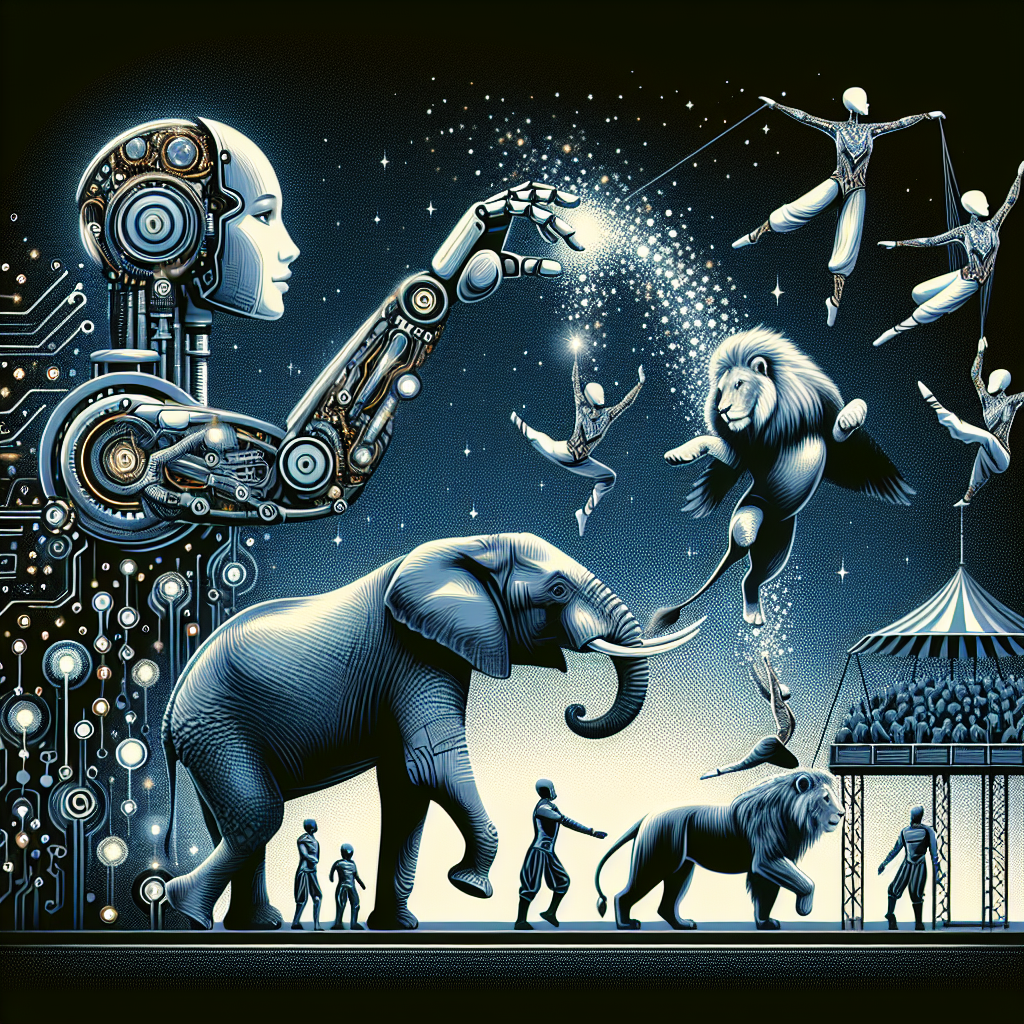The use of artificial intelligence (AI) in circus animal training is a topic that has generated much discussion and controversy in recent years. While some argue that the use of AI can help create lifelike and impressive performances, others raise concerns about the ethical implications of using technology to train animals for entertainment purposes. In this article, we will explore the role of AI in circus animal training, how it is being used to enhance performances, and address some common questions and concerns surrounding this topic.
AI technology has made significant advancements in recent years, with applications ranging from autonomous vehicles to medical diagnostics. In the realm of circus animal training, AI is being used to analyze and interpret animal behavior, identify patterns, and develop training programs that are tailored to each individual animal. By using AI algorithms, trainers can better understand the needs and preferences of their animals, leading to more effective and efficient training methods.
One of the key ways in which AI is being used in circus animal training is through the use of computer vision technology. This technology allows trainers to track and monitor the movements of animals in real-time, providing valuable insights into their behavior and performance. By analyzing this data, trainers can identify areas for improvement and adjust their training strategies accordingly.
Another way in which AI is being used in circus animal training is through the use of machine learning algorithms. These algorithms can analyze large amounts of data to identify patterns and trends in animal behavior, helping trainers to predict how animals will react in different situations. By using machine learning, trainers can develop training programs that are tailored to each individual animal, leading to more successful and impressive performances.
In addition to improving training methods, AI technology is also being used to enhance the overall entertainment value of circus performances. By using AI-powered animatronics and special effects, trainers can create lifelike and immersive experiences for audiences. These technologies can be used to create realistic animal behaviors, such as flying or swimming, that would be difficult or impossible to achieve with live animals alone.
Despite the potential benefits of using AI in circus animal training, there are also concerns about the ethical implications of this technology. Some argue that using AI to train animals for entertainment purposes is exploitative and inhumane, as it can lead to stress, injury, and even death for the animals involved. Others raise concerns about the potential for AI technology to replace human trainers altogether, leading to a loss of jobs and expertise in the industry.
To address these concerns, it is important for circus trainers to use AI technology responsibly and ethically. This includes ensuring that animals are treated with respect and care, and that their welfare is always the top priority. Trainers should also be transparent about the use of AI technology in their performances, and work to educate audiences about the benefits and limitations of this technology.
In conclusion, the use of AI in circus animal training has the potential to create lifelike and impressive performances that entertain and inspire audiences. By using AI technology responsibly and ethically, trainers can enhance the training methods and overall entertainment value of circus performances. However, it is important to consider the ethical implications of using AI in this context and to ensure that the welfare of animals is always a top priority.
FAQs:
1. Is it ethical to use AI in circus animal training?
The ethical implications of using AI in circus animal training are complex and multifaceted. While some argue that AI technology can enhance training methods and create impressive performances, others raise concerns about the potential for exploitation and harm to animals. It is important for trainers to use AI technology responsibly and ethically, ensuring that the welfare of animals is always the top priority.
2. How does AI technology improve circus animal training?
AI technology can improve circus animal training in a number of ways, including by analyzing animal behavior, identifying patterns, and developing training programs that are tailored to each individual animal. By using AI algorithms, trainers can better understand the needs and preferences of their animals, leading to more effective and efficient training methods.
3. What are some of the potential benefits of using AI in circus animal training?
Some of the potential benefits of using AI in circus animal training include improved training methods, enhanced performances, and the ability to create lifelike and immersive experiences for audiences. By using AI technology, trainers can develop training programs that are tailored to each individual animal, leading to more successful and impressive performances.
4. Are there any concerns about using AI in circus animal training?
There are concerns about the ethical implications of using AI in circus animal training, including the potential for exploitation and harm to animals. It is important for trainers to use AI technology responsibly and ethically, ensuring that the welfare of animals is always the top priority. Additionally, there are concerns about the potential for AI technology to replace human trainers altogether, leading to a loss of jobs and expertise in the industry.

